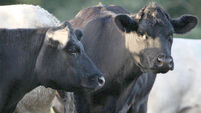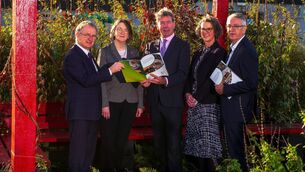Funding will help redress farmers’ losses
A gross estimate provision of 1.39 billion has been provided for the Department of Agriculture and Food next year. The net allocation is 935.1 million.
The gross estimate includes 108 million in respect of forestry, responsibility for which will be transferred to the Department on January 1.
Minister Joe Walsh said the funding represented an increase of 62.2 million or 5% over the 2003 figures. However, when account is taken of reduced expenditure requirements related to BSE in 2004, arising from the improved disease situation, gross expenditure provision has been increased in real terms by 8%.
He said his department was also responsible for the expenditure of a further 1.6 billion on EU-funded agricultural measures, mainly direct payments to farmers.
This will bring expenditure by his department to 3 billion in 2004. Direct payments amount to an average of around 13,000 per farmer each year.
Mr Walsh said the 260 million allocation for the REP scheme (up 70 million on 2003) provided for a 28% increase in average grant payments to participants and should facilitate a significant increase in the number of scheme participants in 2004.
The forestry provision was an increase of 25.3 million (or 31%) over the corresponding 2003 provision. This will fund 12,000 hectares of planting, including 10,000 hectares of new planting next year.
IFA president John Dillon said he was pleased the commitments in the partnership agreement on higher funding for REPS and on farm investment were provided for in the estimates.
“These are important expenditure commitments at a time when agriculture is under great pressure due to CAP reform,” he said.
ICMSA president Pat O’Rourke, welcoming the increased funding for various schemes, said the book of estimates was the first step to recovering the losses farmers incurred as a result of last year’s estimates and budget.
But ICSA general secretary Eddie Punch said there was little to be positive about. It seemed disease costs would become an even greater barrier to the international competitiveness of Irish cattle farmers.
Mr Walsh said lower provisions for some areas, particularly for general disease control and market supports, would help to boost farm income generally.
The allocation for Teagasc provides for an increase of 6m or 23% in the non-pay element of its grant in aid. This had also to be seen against the background where Teagasc’s capital development needs in 2004 will be funded from proceeds from the sale of some assets.










